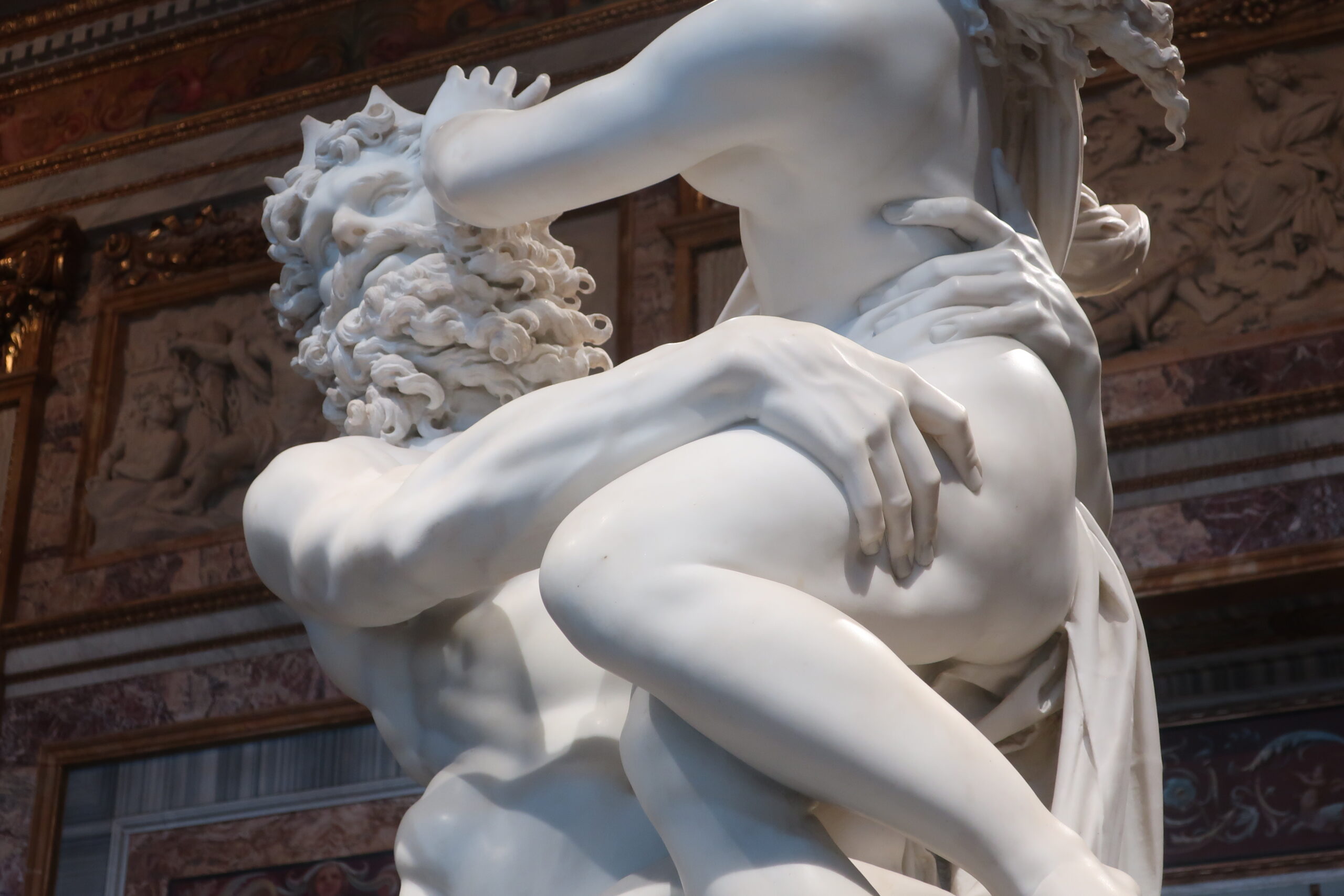Table of Contents
- 1 Travels in Rome] (17) Bernini's "The Sack of Proserpina" - Amazing flesh! Incredible and superbly crafted! An early masterpiece from the collection of the Borghese Museum!
- 1.1 The Plunder of Proserpina" inspired by Ovidius' "The Metamorphoses".
- 1.2 Bernini's originality in pursuing a single point of view rather than the Mannerism (pluralistic point of view) that was popular at the time.
- 1.3 Bernini incorporates pictorial expression into sculpture - skillfully expressing the climax of the story!
Travels in Rome] (17) Bernini's "The Sack of Proserpina" - Amazing flesh! Incredible and superbly crafted! An early masterpiece from the collection of the Borghese Museum!
If you want to see Bernini's early works, the Borghese Gallery in Rome is an absolute must.
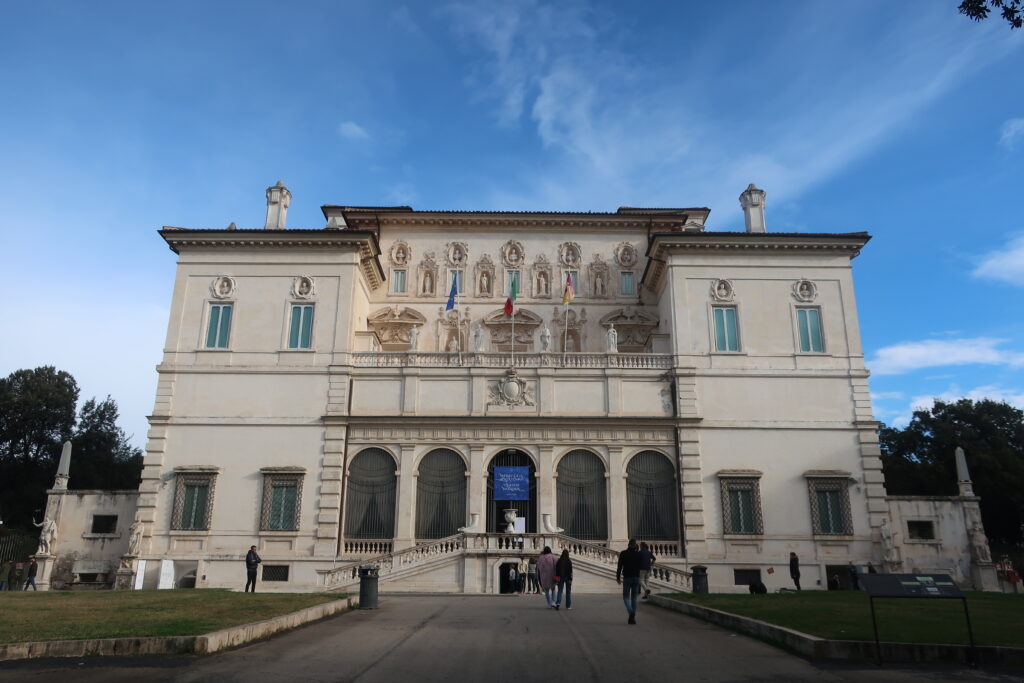
Previous Article(16) Enjoy early works by Bernini and masterpieces by Caravaggio at the Borghese Museum in Rome!"In the first section of this article, we have introduced some of his earliest works, but in this article we will look at Bernini's first masterpiece, "The Plunder of Proserpina," now in his twenties.
The Plunder of Proserpina" inspired by Ovidius' "The Metamorphoses".
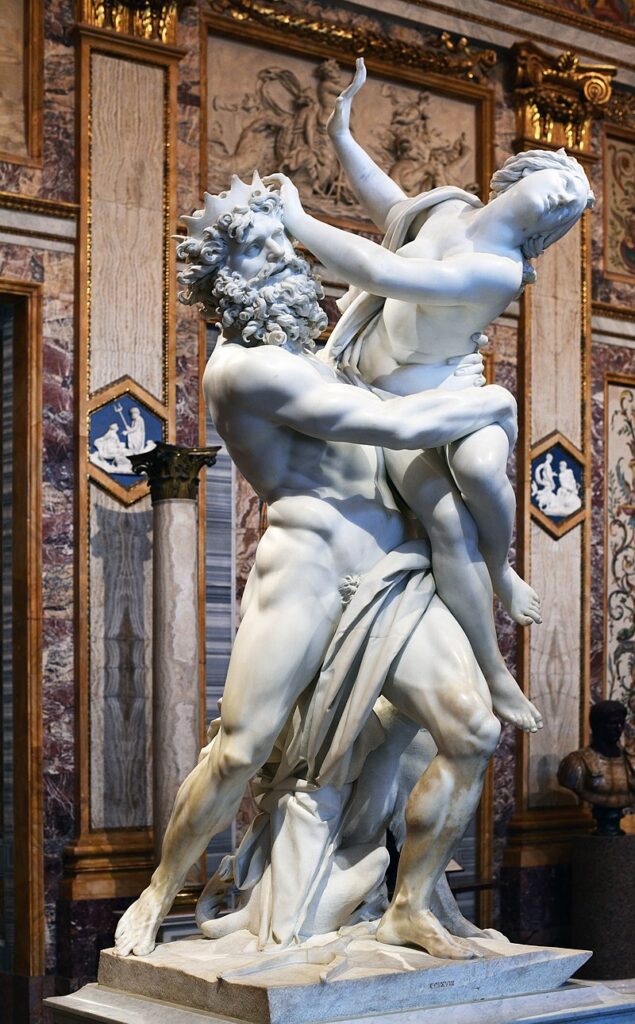
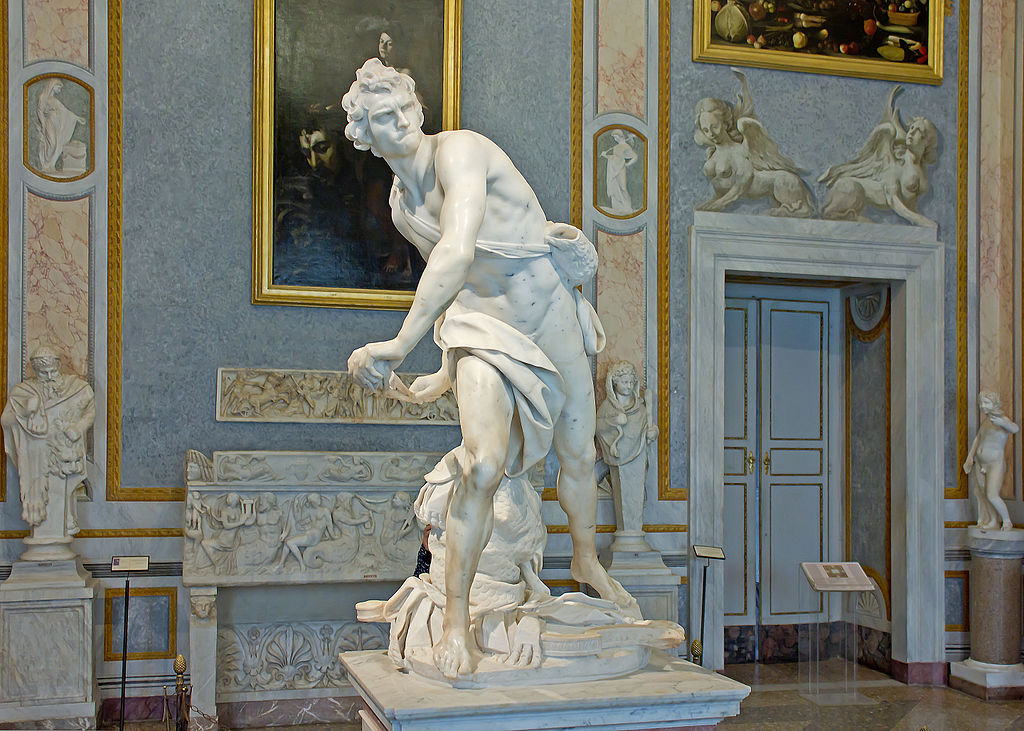
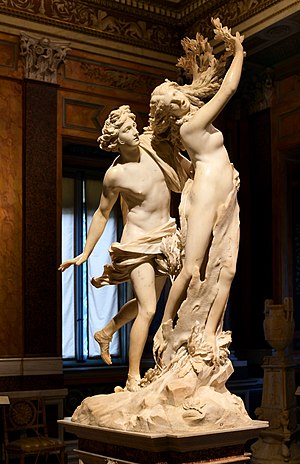
The first full-scale sculpture by Sipione Borghese was "Aeneas," which was followed by three more works by Bernini: "The Sack of Proserpina," a treasure of the Borghese Gallery, "David," and "Apollo and Daphne. Bernini followed this with three more works: "The Sack of Proserpina," a treasure of the Borghese Gallery, "David," and "Apollo and Daphne," which is now in the Borghese Gallery.
The first of the three works, "The Plunder of Proserpina," was probably produced between 1621 and 1622, following "Neptune and Triton. The theme of Pluto's abduction of Proserpina after Cupid shoots him with an arrow of love is based on Ovidius' "The Tale of the Transfiguration.
Masumi Ishinabe, Yoshikawa KobunkanBernini, Giant Star of Baroque Art.p23
Ovidius school (of philosophy)Aeneis."He was a Roman poet one generation after Vergilius, who wrote Aeneis," which was the motif of Bernini's "Aeneas," was the founding myth of Rome. Oedipus, following in his footsteps, wrote about the spirit and culture of Rome.A Tale of Transformation.The book is summarized in the following paragraphs. The existence of these two Roman poets, Vergilius and Oedipus, had a tremendous influence on later European culture. They were the fountainhead of European art. Bernini was also influenced by these poets.
Bernini's originality in pursuing a single point of view rather than the Mannerism (pluralistic point of view) that was popular at the time.
Mannerist sculptors favored this subject matter of plunder, such as "The Plunder of Proserpina" and "The Plunder of the Two Sabi Women," and of struggle, such as "Samson and the Philistines. This was partly because these types of subjects were suited to the complex movements in which they excelled. In conceiving this sculpture, Bernini initially conceived of a spiral pose of two figures twisting toward each other in the manner of the Mannerists. This is indicated by the only surviving preparatory drawing of this early sculpture.
In the sculptures actually produced, however, this Mannerist concept of interlocking spirals has been abandoned. At the same time, the aesthetic of multiplicity of viewpoints, which was a major characteristic of Mannerist sculpture, was abandoned (Checcellini, a leading Mannerist sculptor, said that sculpture is eight times better than painting, because painting has only one viewpoint, while sculpture has eight! (Chelsea, a representative of Mannerist sculpture, said that sculpture is eight times better than painting because painting has only one point of view, whereas sculpture has eight!) ).
Indeed, the "Plunder of Proserpina" is designed to be viewed from the front. This makes sense if we compare it to Giambologna's "The Plunder of the Two Sabi Women," which is typical of Mannerist sculpture. Gambologna's work has a point of view that rotates endlessly, forcing us to circle around it.
Bernini's works, on the other hand, are works that anyone can view from the front, from a single perspective, as if looking at a painting. Clearly, Bernini was rejecting the plurality of viewpoints of Mannerist sculpture, and as a result, he was returning to the single viewpoint sculpture of the Renaissance.
But it is no longer possible to be satisfied with the Renaissance sculptural method of centripetal exploration of form, so to speak, within a single block of marble. Therefore, it can be said that Bellini sought to achieve the diversity of form and freedom of conception achieved by the Mannerist sculptors in the sculpture of the Renaissance, which had a single point of view. Thus, "by combining the univocal perspective of the Renaissance with the freedom achieved by the Mannerists, Bernini laid the foundation for a new Baroque conception of sculpture" (Wittkauer).
With the exception of the sculptures that were made to be viewed from various directions, such as the fountain and the sculptures adorning the Ponte di San Tangelo, all of Bellini's later sculptures were created with a single point of view. The "Plunder of Proserpina" is currently on display in the center of the museum, in the so-calledIndependent.Although it is displayed as a sculpture, it is known that it was originally hung on a wall. (The sculpture, however, was a gift from Sipione Borghese to Ludovico Ludovisi in July 1623, and remained in the Ludovisi family villa until it was purchased by the state in 1999.)
Masumi Ishinabe, Yoshikawa KobunkanBernini, Giant Star of Baroque Art.p24-25
*some line breaks.

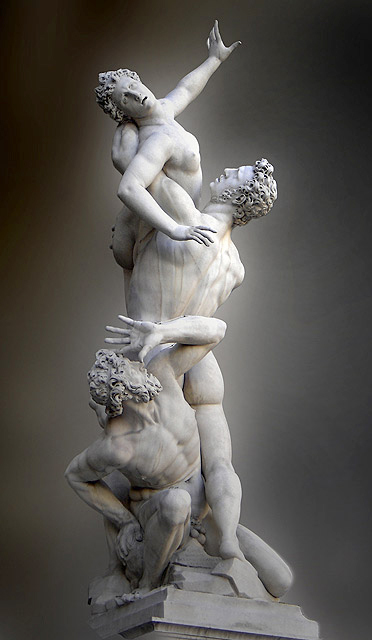
Indeed, when placed side by side, Jean Bologna's work reveals the rotational and spiral forms of Mannerism. This clearly shows that the two statues were created based on different principles.
And it is important to note that Bernini did not do this simply because he disliked the style that was popular at the time. He combined the style perfected in Michelangelo's time and took it to a higher level.By combining the univocal perspective of the Renaissance with the freedom achieved by the Mannerists, Bernini laid the foundation for a new Baroque conception of sculpture."I believe that the phrase "I am a great musician," aptly describes Bernini's originality and accomplishments.
Originality does not come from nothing. This episode reminds us that new things are born by combining different things and re-creating them.
Bernini incorporates pictorial expression into sculpture - skillfully expressing the climax of the story!
Along with this singular point of view, the next thing to note is that in this work, Bernini is trying to capture the climactic moment of the story. In this sense, the sculpture is reminiscent of a painting, or more specifically, a photograph. In other words, the sense of movement in this work is completely different from that of Giambologna's "The Plunder of the Two Rusty Women" in which the form itself has a sense of movement, and is the result of fixing a moment, like a snapshot.
As Bernini himself realized, it was a bold attempt to achieve this pictorial expression through sculpture. But in doing so, he was able to create a new type of marble sculpture, the Baroque type, as mentioned above. It is hard to believe that his sculpting technique could realize such a daring idea of capturing a moment in sculpture with such rarity. The brilliance of his marble carving technique is evident in every detail of this work.
For example, see the expression of Proserpina's skin around where Pluto's finger digs into it. It is a scene that makes the viewer fall in ecstasy.techniqueThe figure is a stone, yet it does not look like a stone. The true physical expression of the figure, which is stone but not quite stone, reminds one of Bernini's later comment that Michelangelo's figures are anatomically wonderful but do not feel physical. He told Chantreau in Paris: "He [Michelangelo] is a very good artist. He [Michelangelo] is a great sculptor and a great painter, but more than that he is a divine architect. He [Michelangelo] is a great sculptor and a great painter, but more than that, he is a divine architect, because architecture is all aboutsketchIn sculpture and painting, however, he has no talent for physical expression. In sculpture and painting, however, he has no talent for physical expression, and his figures are only anatomically beautiful and handsome.
Much later, in the later years of Bellini's life, someone who saw his "Equestrian Portrait of Louis XIV" once criticized him, saying that the king's robe and the horse's mane had too much movement and had departed from ancient precedents. To this, Domenico relates that Bernini responded as follows.
What you have described as a shortcoming is in fact the crowning achievement of my art. It is for this reason that I have overcome the difficulty of treating marble as if it were wax, thus to some extent uniting painting and sculpture. The reason the ancients did not accomplish this is probably because they lacked the courage to bend marble to their will.
In "The Plunder of Proserpina," the idea of combining painting and sculpture, and the will to carve marble as if it were wax, are already clearly evident. When we consider that this is the third full-scale sculpture by Bellini, we are struck by the same surprise we felt when we saw his first works. It seems that he had the innate qualities of new ideas, the daring to try them, and the skill to realize them.
Masumi Ishinabe, Yoshikawa KobunkanBernini, Giant Star of Baroque Art.p26-28
*some line breaks.
I had to groan when I read this commentary. Bernini expressed the decisive moment there like a snapshot! An amazing idea to create sculpture in a painterly way! If one were to pursue sculpture-like qualities, the usual idea would be to try to create something more unique to sculpture. Bernini, however, is different. This is an astonishing idea.

I also had a chance to experience Bernini's superb technique, which was highly praised in the above commentary, up close and personal. Even from this distance, the realism, or rather, the texture beyond realism, is astonishing, but let me venture to get even closer.
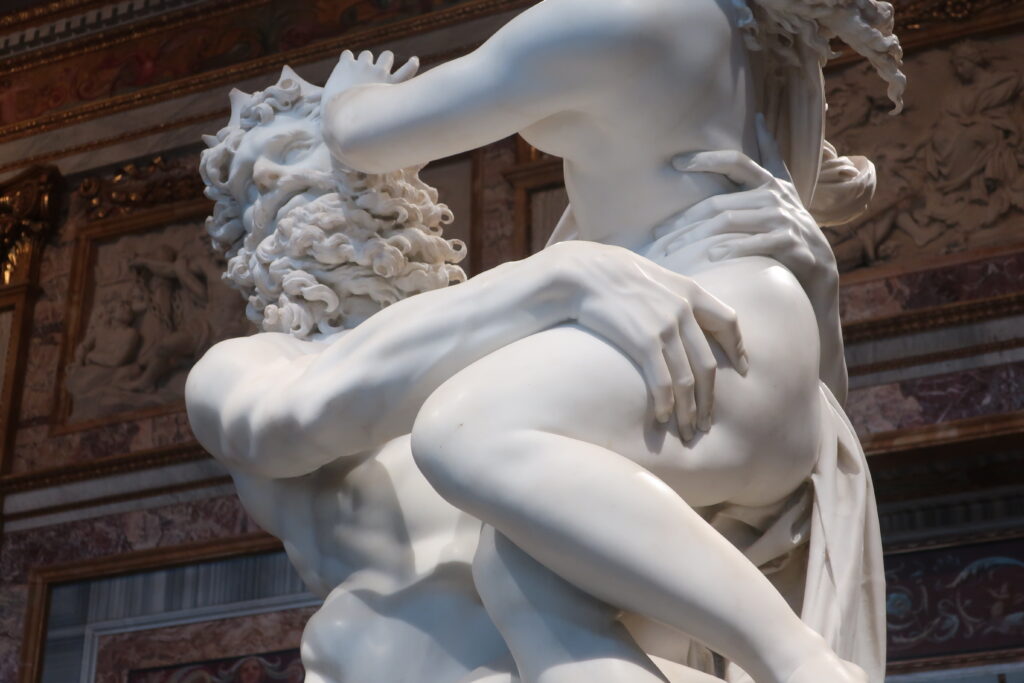
What do you think? The author says, "There is a "magic" in it that makes the viewer ecstatic.techniqueI can't help but be ecstatic, as if to say, "There's No kidding!" The texture was so much better than I thought it would be. Note the softness of the skin where my fingers dug into it. I couldn't believe my eyes that this was really stone.
Bernini was not merely original. It was the superb technique that made it possible for him to make the most of his originality. It is not enough to have an idea. It would have ended up as mere fantasy. It is only when backed up by solid, even overwhelming, technology that originality is realized.
This is the work of Bernini in his 23rd year. I don't know how to describe it any more. At that age, he had already reached the top of the top technically. He is a formidable man.
be unbroken
*The list of articles in the "Rome Travel Journal" can be found atCategory page hereindicates direction or goal (e.g. "to")
*Please visit this category page for recommended books to learn about Rome and Italy.
The Rise and Fall of the Roman Empire, the Vatican, and Roman Catholicism."
The Italian Renaissance and the Revolution in Knowledge."
Next Article.
Click here to read the previous article.
Related Articles











